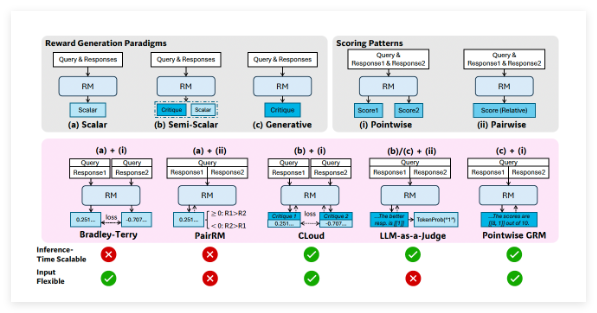Recently, the Persona Engine project has been officially open-sourced. Its powerful capabilities, integrating cutting-edge technologies such as Large Language Models (LLMs), Live2D, Automatic Speech Recognition (ASR), Text-to-Speech (TTS), and Real-time Voice Cloning (RVC), have garnered significant attention in the AI and virtual content creation fields. According to AIbase, the project enables real-time interaction with virtual characters by granting them natural conversation and dynamic expression capabilities. This is particularly suitable for VTubing, live streaming, and virtual assistant applications. The project's launch on GitHub marks another milestone in AI-driven virtual interaction technology.

Image Source Note: Image generated by AI, licensed by Midjourney
Core Functionality: Immersive Interaction Through Multi-Technology Integration
Persona Engine integrates multiple AI technologies to give virtual characters highly realistic interaction capabilities. AIbase has summarized its key highlights:
Large Language Model (LLM): Based on an OpenAI-compatible LLM API, combined with a custom personality profile (personality.txt), it infuses the character with a unique language style and personality, supporting context-aware natural conversations.
Live2D Animation: Supports loading Live2D models (such as Aria models), achieving voice-driven lip-sync through the VBridger standard. It also triggers corresponding expressions and actions based on emotional tags output by the LLM, enhancing visual expressiveness.
Voice Interaction: Integrates Whisper ASR (via Whisper.NET) for speech recognition, combined with Silero VAD for voice segment detection, supporting real-time voice input. The TTS module generates natural speech, with an optional RVC module for real-time cloning of target voices.
OBS Integration: Through Spout streaming technology, Persona Engine directly outputs the animated character, subtitles, and interactive wheel to OBS Studio, adapting to live streaming and content creation needs.
AIbase noted that the project demonstration showcased the character's smooth response to voice commands. Idle animations and emotion-driven dynamic expressions further enhance the realism of the interaction, making it an ideal solution for virtual anchors and assistants.
Technical Architecture: Modular Design and Efficient Integration
According to AIbase's analysis, Persona Engine uses a modular architecture to ensure efficient operation and flexible expansion:
Voice Processing: NAudio/PortAudio supports microphone input, Silero VAD segments speech, Whisper ASR performs transcription, and the TTS and optional RVC modules generate personalized voice output.
Animation Rendering: Live2D models drive lip-sync and emotional animation via ONNX. Idle and blinking animations maintain the character's natural state. See the Live2D integration guide for details.
Interaction Management: The UI window supports real-time adjustment of TTS parameters (such as pitch and speed) and viewing conversation history. An optional visual module allows the AI to "read" screen text.
Stream Output: Spout stream sends visual elements (character, subtitles, wheel) and audio separately to OBS or other compatible software, eliminating the need for window capture.
The project uses appsettings.json for primary configuration. Developers can adjust model and hardware settings as needed. AIbase believes its modular design and detailed documentation significantly lower the barrier to secondary development.
Wide Applications: Diverse Scenarios from Live Streaming to Virtual Assistants
The open-source release of Persona Engine offers broad application prospects for multiple fields. AIbase summarizes its main scenarios:
VTubing and Live Streaming: Create AI-driven virtual anchors or interactive characters that respond in real-time to audience voices or comments, enhancing the immersive experience of live streaming.
Virtual Assistants: Build personalized desktop companions that support voice interaction and task assistance, suitable for personal productivity improvement or entertainment scenarios.
Content Creation: Generate dynamic character animations for short videos, educational content, or brand promotion, reducing production costs.
Education and Research: Provide an open-source platform for research on AI interaction, speech processing, and animation rendering, driving technological innovation.
Community testing shows that Persona Engine excels in OBS integration and smooth voice interaction, particularly suitable for independent creators and small live streaming teams. AIbase observes that its optional RVC module provides a unique advantage for personalized voice customization.
Getting Started: Developer-Friendly, Low-Barrier Deployment
AIbase understands that Persona Engine has relatively flexible hardware requirements, supporting operation on devices equipped with an RTX3060 or higher configuration. Developers can quickly get started through the following steps:
Clone the Persona Engine repository from GitHub and install dependencies such as NAudio and PortAudio.
Configure appsettings.json, specifying the LLM API, Live2D model, and audio devices.
Run the engine, connect to OBS Studio, and start interacting by inputting voice or text.
The project provides the Aria model and a Live2D integration guide, supporting custom models and expression triggers. The community recommends that beginners refer to the installation and troubleshooting documentation to optimize speech recognition and stream output effects. AIbase reminds users that the RVC module has higher computational resource requirements and can be disabled based on performance needs.
Future Outlook: Open-Source Community Drives Continuous Evolution
The release of Persona Engine not only showcases the innovative potential of combining AI and Live2D but also stimulates community vitality through the open-source model. AIbase observes that developers are already discussing enhanced multilingual support, optimizing performance on low-end devices, and expanding visual module functionality. The community has also suggested integrating more LLMs (such as Grok3) and TTS models. In the future, it may support more complex interaction scenarios, such as multi-person conversations and real-time emotion analysis. AIbase believes that with the popularization of the MCP protocol, Persona Engine is expected to become a standard framework in the virtual assistant and live streaming fields.









